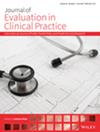Capturing Real-World Rare Disease Patient Journeys: Are Current Methodologies Sufficient for Informed Healthcare Decisions?
Abstract
Rationale
Despite growing emphasis among healthcare decision-makers on patient perspectives and real-world outcomes to inform care and access decisions, understanding of patient journey experiences in rare diseases remains limited due to data collection and evaluation challenges.
Aims and Objectives
This systematic literature review (SLR) assessed study designs, methodologies, and outcomes reported in real-world investigations of rare disease patient journeys.
Methods
Searches in PubMed and Google Scholar targeted English-language publications and congress proceedings from 1 January 2014, to 30 April 2024, including rare disease patients, caregivers, or healthcare providers. Keywords included ‘Journey’, ‘Path’, or ‘Odyssey’. Two reviewers independently assessed eligibility and abstracted data. Descriptive analyses and quality assessments were conducted.
Results
Thirty-one studies met inclusion criteria, with 296,548 participants spanning over 600 rare diseases. Most studies used prospective observational (61%) and cross-sectional (26%) designs and were conducted in Europe (45%). Interviews (39%) and surveys (29%) were common methodologies. Patients (87%) were the primary research focus, compared to caregivers (32%) or providers (10%). The most studied journey stages were ‘Pre-diagnosis/Screening’ (97%) and ‘Diagnosis’ (84%), while ‘Disease Awareness’ (16%) and ‘Treatment Adherence’ (6%) were less common. Across 164 outcomes reported, frequent outcomes included ‘Healthcare Resource Utilization’ (94%), ‘Symptoms’ (74%), and ‘Time-to-Diagnosis’ (71%). Fewer studies reported ‘Costs’ (19%), ‘Caregiver/Family Burden’ (16%), and ‘Productivity’ (13%). Time-to-diagnosis averaged 11.8 years and a median of 6.1 years. All but one study (97%) was rated low or very low quality due to observational designs.
Conclusion
Most rare disease patient journey evidence focuses on ‘Pre-diagnosis/Screening’ and ‘Diagnosis’ stages using qualitative methods and surveys. While symptoms, time-to-diagnosis, and resource utilization were commonly reported, evidence gaps included treatment adherence, caregiver burden and productivity. Longitudinal assessments to collect real-world care and treatment burden outcomes, including caregiver perspectives, can enhance both clinician and policy decision-making for individuals living with rare diseases.


 求助内容:
求助内容: 应助结果提醒方式:
应助结果提醒方式:


